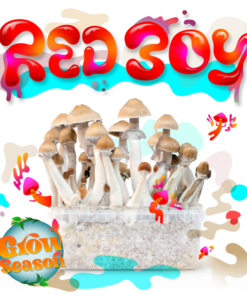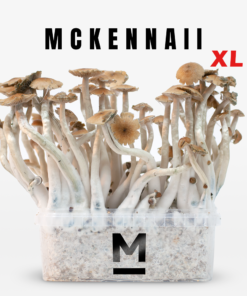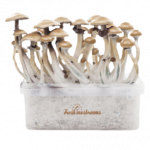Treasure Coast Mushroom
$44.50
Discover everything about Treasure Coast mushrooms, from identification and growing tips to their medicinal properties and ecological importance. A comprehensive guide for foragers and cultivators.
Treasure Coast Mushrooms: Identification, Benefits, and Growing Tips
Introduction
The Treasure Coast region of Florida is home to a diverse variety of mushroom that intrigue both foragers and mycologists alike. Known for their unique appearance and potential benefits, Treasure Coast mushroom have become a topic of interest for people curious about wild fungi. In this article, we’ll explore everything you need to know about Treasure Coast mushrooms from how to identify them to understanding their uses and growing them at home.
1. What are Treasure Coast Mushrooms?
Treasure Coast mushrooms are a strain of Psilocybe cubensis, a well-known psychedelic mushroom. While these mushrooms are native to the Treasure Coast of Florida, they are now cultivated around the world by mushroom enthusiasts. They are famous for their golden caps, robust stems, and psychoactive properties.
The term Treasure Coast refers to the geographical area where these mushroom were initially discovered, adding to the mystique and allure of this unique species.
2. Types of Mushrooms Found in the Treasure Coast Region
The Treasure Coast isn’t just home to psychedelic mushroom this region supports a variety of fungi species. Some of the common types include:
- Chanterelles: Edible mushrooms often found in coastal areas with oak trees.
- Oyster Mushrooms: These grow on trees and are commonly found in humid environments like Florida’s coastal areas.
- Reishi Mushrooms: Known for their medicinal properties, these mushrooms are sometimes found growing on hardwood trees.
- Psilocybe cubensis (Treasure Coast Strain): As previously mentioned, this is the most famous mushroom associated with the Treasure Coast.
Each of these mushrooms serves a different purpose, from culinary uses to traditional medicine.
3. How to Identify Treasure Coast Mushrooms
Foraging for mushrooms can be both fun and educational, but it’s essential to correctly identify species to avoid toxic varieties. Here’s how to spot Treasure Coast mushrooms:
- Cap: Typically golden brown with a convex shape that flattens as it matures.
- Gills: Dark brown to black gills under the cap.
- Stipe (Stem): Thick and sturdy, white to slightly yellowish in color.
- Spores: They leave dark purplish-brown spore prints.
- Habitat: Grows in warm, humid environments, often found in manure-rich soils.
Note: Always be cautious when foraging, as many wild mushrooms look alike. If you’re unsure, consult an expert before consumption.
4. Medicinal and Psychoactive Properties
Treasure Coast mushroom, specifically the Psilocybe cubensis strain, contain psilocybin, a naturally occurring psychedelic compound. Psilocybin has been studied for its potential benefits in treating mental health conditions such as depression, anxiety, and PTSD. While research is still ongoing, these mushrooms have become popular among those seeking alternative therapies.
It’s important to note that the possession and use of psilocybin mushrooms are illegal in many parts of the world, including most states in the U.S. However, there is a growing movement advocating for the legalization of psilocybin for therapeutic use.
5. How to Grow Treasure Coast Mushrooms at Home
For those interested in cultivating Treasure Coast mushroom, it’s important to understand the growing process:
- Substrate: These mushrooms typically grow in nutrient-rich substrates like cow manure or vermiculite mixed with brown rice flour.
- Spawning: Spores can be obtained from reputable sources, and a spore syringe is used to inoculate the substrate.
- Environment: Treasure Coast mushrooms thrive in warm, humid conditions. Ideal temperatures range between 70-80°F (21-27°C), with high humidity levels around 90%.
- Fruiting: After a few weeks of colonization, the mushrooms will begin to fruit, and you can harvest them once the caps open and the veil breaks.
Growing these mushrooms requires attention to cleanliness, as contamination can spoil the entire process. Many hobbyists recommend starting with a grow kit if you’re new to cultivation.
6. Safety Tips for Foraging and Growing
While foraging for mushrooms can be a rewarding experience, safety is paramount. Here are a few tips:
- Never consume mushrooms unless you are 100% certain of their identification. Misidentifying a mushroom can lead to severe illness or even death.
- Wear gloves while handling wild mushrooms, as some may contain toxins on their surfaces.
- Research local laws if you’re considering growing psychedelic mushrooms. While cultivation is legal in some places, it remains illegal in many regions.
Always consult with local mycological societies or experts before embarking on mushroom foraging or cultivation.
7. The Ecological Role of Mushrooms in Treasure Coast
Mushrooms play a vital ecological role in the Treasure Coast. They help break down organic matter, recycle nutrients, and support plant life by forming symbiotic relationships with tree roots. This ecological contribution makes the fungi in this region a crucial part of the coastal ecosystem’s health.
Conclusion
Treasure Coast mushrooms are a fascinating and diverse group, offering both edible and medicinal varieties. Whether you’re a curious forager or an aspiring cultivator, these mushrooms provide plenty to explore. However, it’s essential to prioritize safety when handling any wild fungi and stay informed about local regulations regarding psychedelic varieties.
By learning more about the mushrooms native to the Treasure Coast, you can deepen your appreciation for nature and perhaps discover a new hobby along the way!
FAQs About Treasure Coast Mushroom
Q: Are Treasure Coast mushrooms legal?
A: Psilocybin mushrooms are illegal in most places, but check local laws for specific details.
Q: Can I grow Treasure Coast mushrooms indoors?
A: Yes, many people successfully cultivate them at home using proper substrates and grow kits.
Q: What should I do if I accidentally consume a wild mushroom I can’t identify?
A: Seek medical attention immediately, as some wild mushroom are toxic.
Be the first to review “Treasure Coast Mushroom” Cancel reply
Related products
Magic Mushroom Grow Kits
Magic Mushroom Grow Kits
Magic Mushroom Grow Kits
Magic Mushroom Grow Kits
Magic Mushroom Grow Kits
Magic Mushroom Grow Kits
Magic Mushroom Grow Kits
Magic Mushroom Grow Kits






















Reviews
There are no reviews yet.